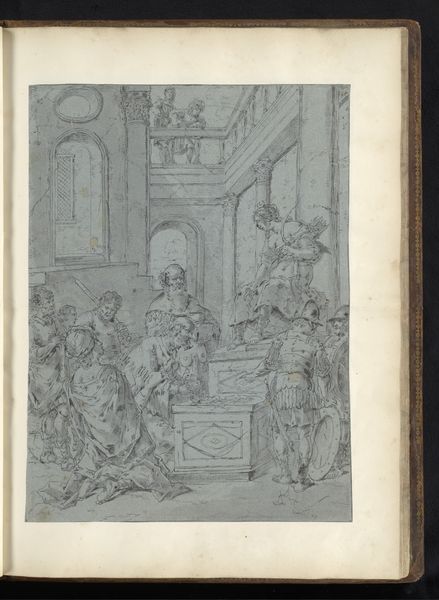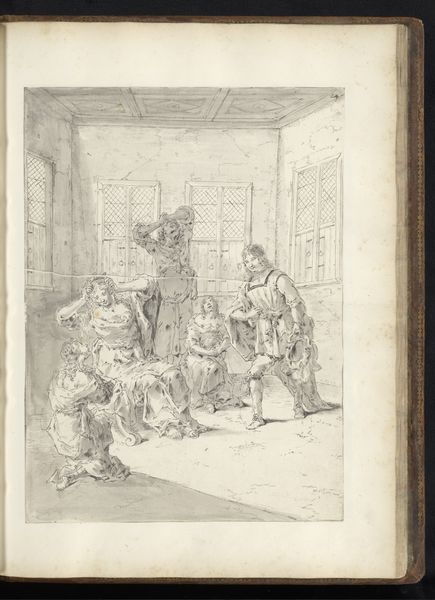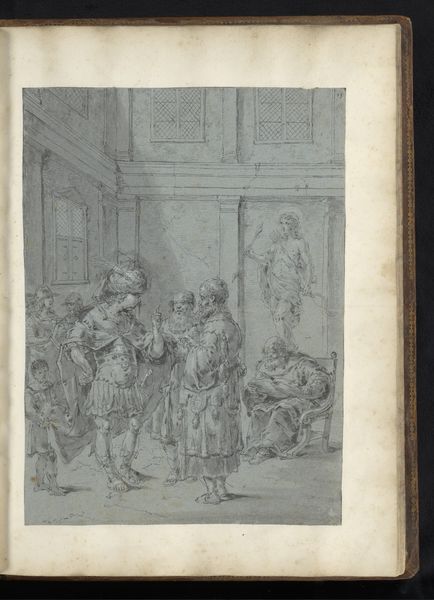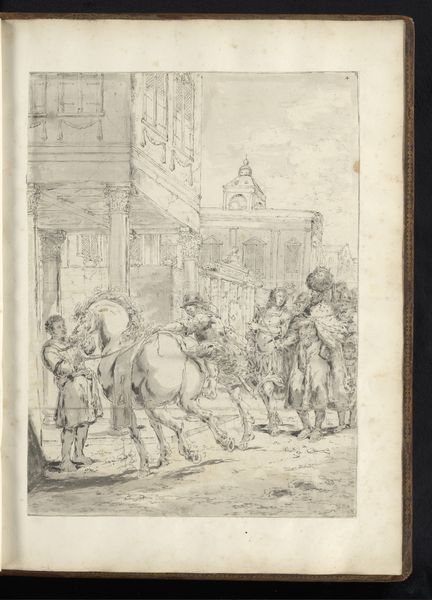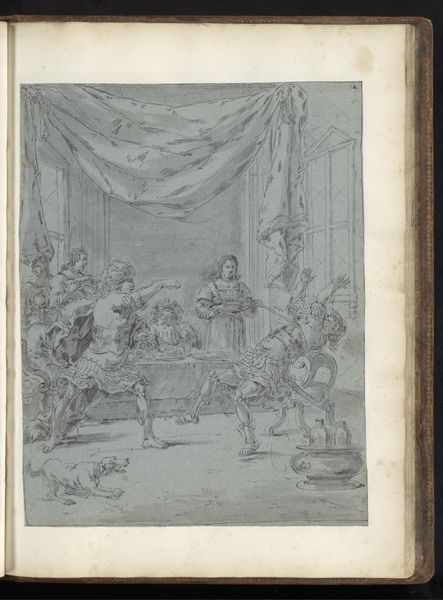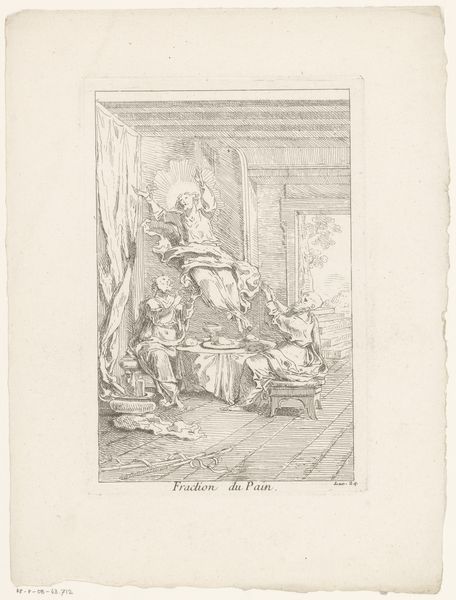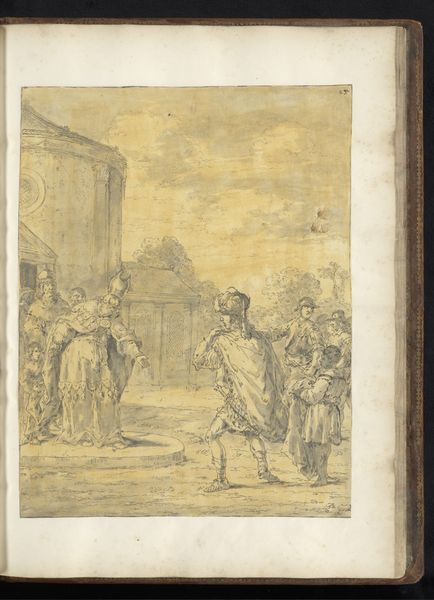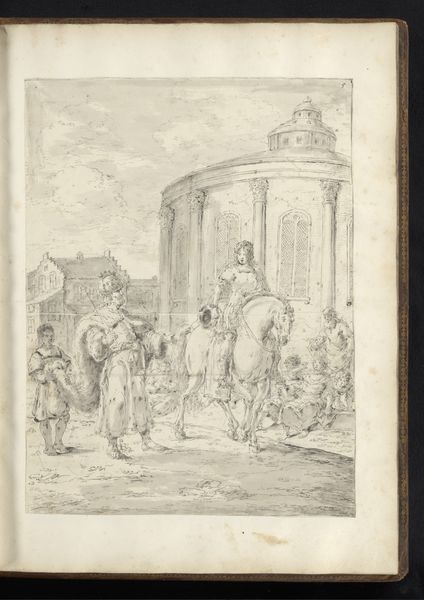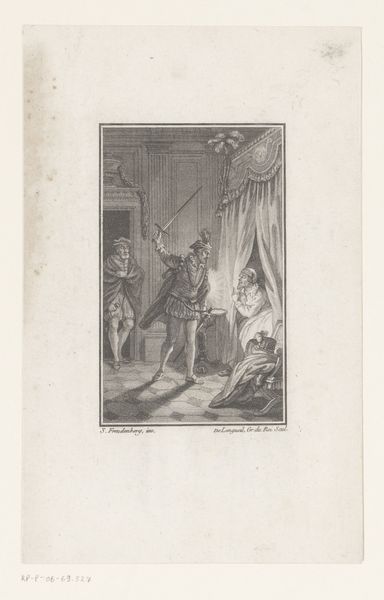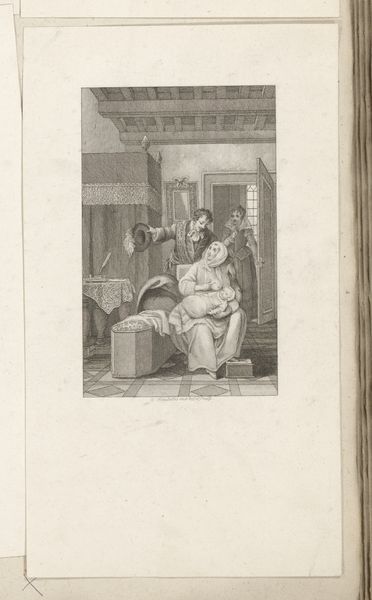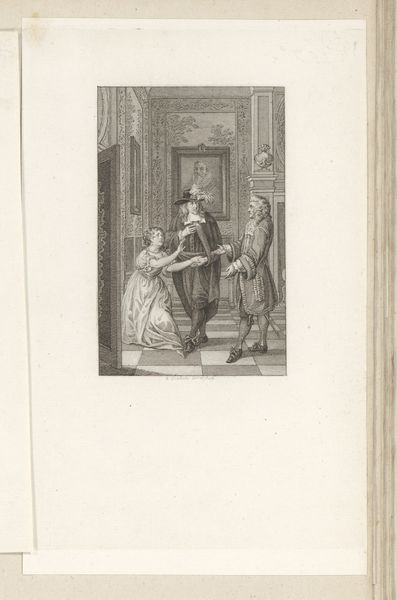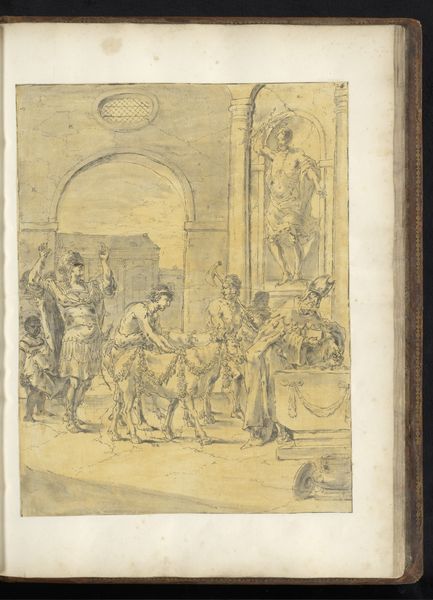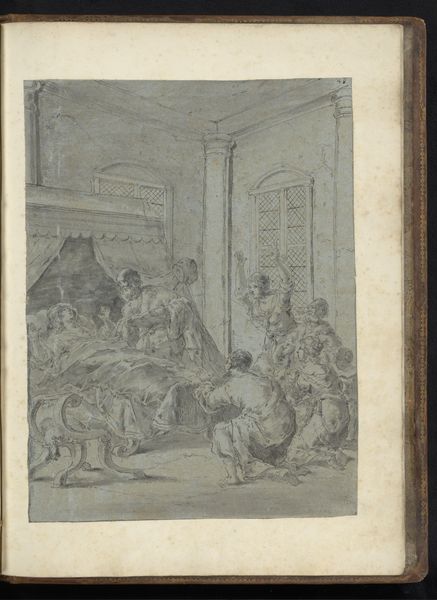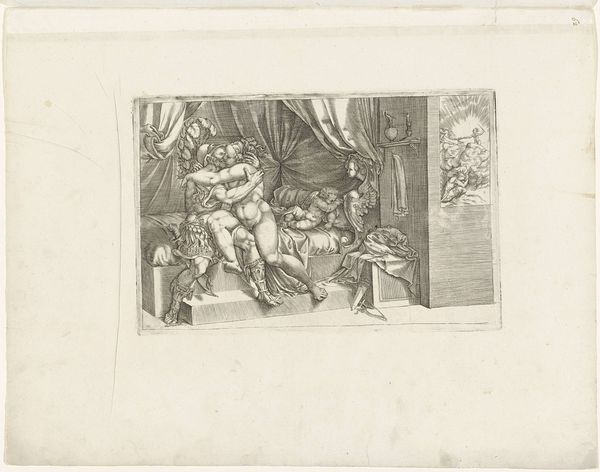
drawing, ink
#
drawing
#
narrative-art
#
baroque
#
figuration
#
ink
#
history-painting
Dimensions: height 411 mm, width 297 mm
Copyright: Rijks Museum: Open Domain
Curator: Before us we have Leonaert Bramer's rendering of Alexander the Great's legendary feat: cutting the Gordian Knot. Bramer executed this Baroque scene in ink, likely between 1655 and 1665. Editor: My first impression is how surprisingly light it feels! The linework is delicate, almost airy. And while the subject suggests grand, historical drama, the artist conveys a restrained kind of power, wouldn't you agree? Curator: Restraint is key here. Bramer prioritizes structure. Notice how the composition leads the eye: the linear perspective of the architecture, converging toward the background. And how the tension between the stasis of the statues versus the action of Alexander and his entourage charges the scene. The figures are deliberately arranged for optimal visual balance. Editor: Symbolically, the knot itself is the main event! Legend has it that whoever could untie it would rule Asia. Alexander, impatient with diplomacy and destiny's slow pace, simply sliced through it with his sword. The act embodies decisive leadership but also potentially, rashness. What do you think Bramer might be suggesting? Curator: It is hard to say, though he would have been working from established tropes. Given the Baroque sensibilities, and the inherent tension in the composition, perhaps we are meant to consider it a metaphor for forceful innovation, cutting through old, complicated conventions for a new order. Observe, though, the curious figure to Alexander's left: an almost spectral onlooker gazing knowingly upon the beheading of the Gordian Knot. What might they know about all this? Editor: Perhaps a recognition of destiny's unfolding. This character echoes the psychological weight behind this kind of mythological subject. It touches on how these moments resonate across cultural memory. What once was, becomes myth, becomes instruction. Curator: And from an artist in the mid-17th Century, the myth becomes technique. In Bramer’s rendering, you see the foundation for future draughtsmen: composition as narrative force, in and of itself. Editor: A fascinating encounter, indeed. The scene encapsulates the weight of leadership, all brought to life with deftness. Curator: Absolutely. Bramer certainly leaves much for us to unpack here about the formal construction of meaning.
Comments
No comments
Be the first to comment and join the conversation on the ultimate creative platform.
